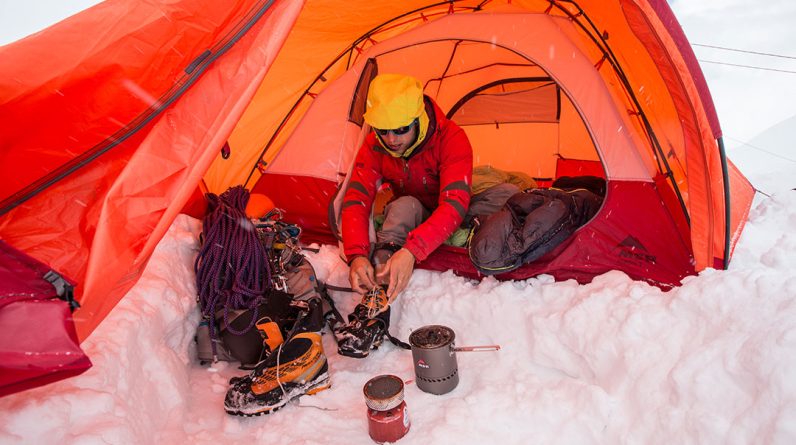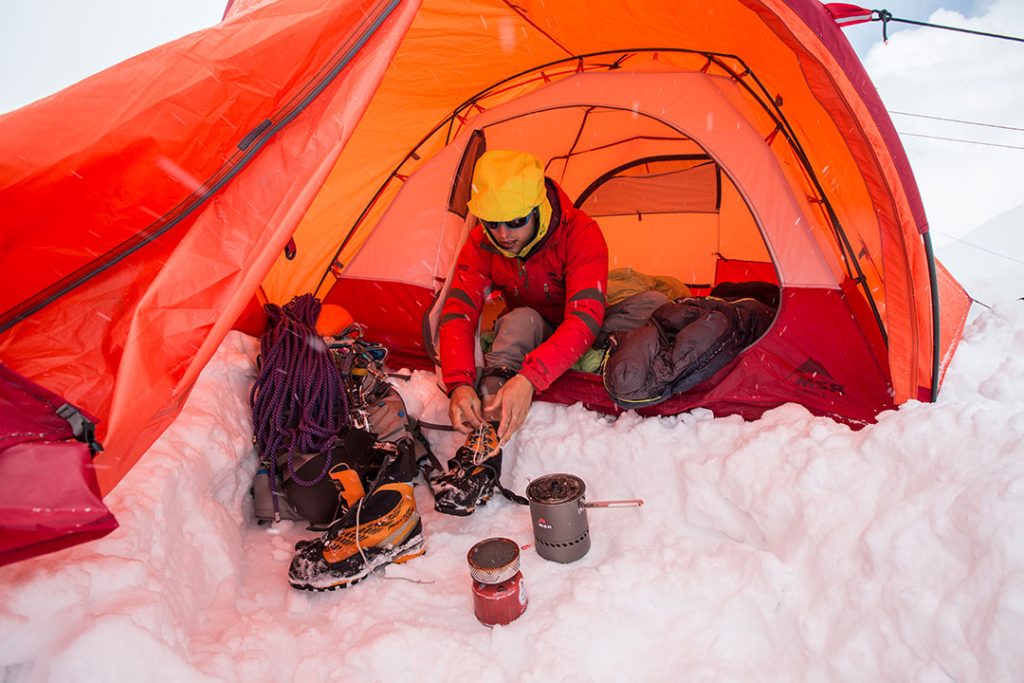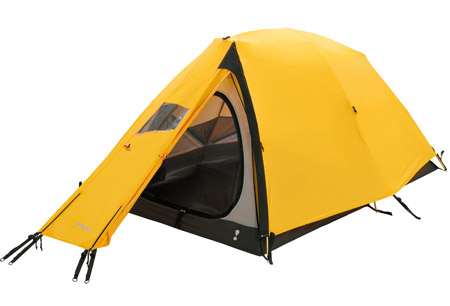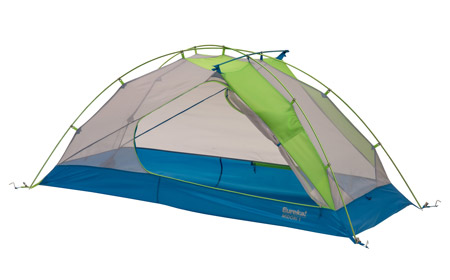
Ever wondered what sets 3-season and 4-season tents apart? Well, you’re in luck because we’re about to dive into the details. Whether you’re a seasoned camper or a newbie to the outdoor adventure scene, understanding the differences between these types of tents can make a world of difference in your camping experience. So, let’s get started, shall we?
When it comes to 3-season and 4-season tents, the main factor to consider is the weather conditions you’ll be facing. 3-season tents are designed for use in spring, summer, and fall, when the weather is relatively mild. They are lightweight, breathable, and provide excellent ventilation to keep you comfortable in warmer temperatures. On the other hand, 4-season tents are built to withstand harsh winter conditions. They are constructed with durable, heavy-duty materials that can handle strong winds, heavy snowfall, and freezing temperatures.
It’s important to note that 4-season tents are also suitable for use in 3-season conditions. However, 3-season tents are not designed to withstand the extreme weather conditions that 4-season tents can handle. So, if you’re planning on camping in the winter or in high-altitude mountainous regions, opting for a 4-season tent is your best bet. But if you’re mainly planning on camping during the spring, summer, and fall, a 3-season tent will meet your needs just fine.
In the following article, we’ll delve deeper into the specific features of 3-season and 4-season tents, their pros and cons, and how to choose the right one for your camping adventures. So, whether you’re a fair-weather camper or a die-hard winter enthusiast, stay tuned for more information on these essential outdoor gear items. Happy camping, my friend!

This image is property of treelinebackpacker.files.wordpress.com.
A Guide to Understanding 3-Season and 4-Season Tents
When it comes to camping and outdoor adventures, having a reliable and suitable tent is essential. One of the key factors to consider when purchasing a tent is deciding between a 3-season and a 4-season tent. While both options have their own advantages and disadvantages, understanding the purpose, ideal weather conditions, temperature range, and features of these tents can help you make an informed decision that matches your camping needs.
Seasonal Differences
Understanding the Purpose
Before diving into the specific features and considerations, it’s important to understand the main purpose of 3-season and 4-season tents. 3-season tents are designed to provide adequate shelter during spring, summer, and fall. They are lightweight, have good ventilation, and protect users from rain and wind. On the other hand, 4-season tents are specifically built to withstand harsh winter conditions, including heavy snowfall, strong winds, and low temperatures. They are designed to provide insulation and protect against extreme weather conditions.
Ideal Weather Conditions
Ideal weather conditions for 3-season tents include moderate temperatures, minimal rainfall, and moderate wind speeds. They are perfect for camping during pleasant spring and fall weather and are geared towards providing comfort in warm conditions. In contrast, 4-season tents are designed to withstand harsh weather conditions, including heavy rain, snow, and strong winds. They provide an additional layer of protection and insulation, making them suitable for extreme cold and snowy environments.
Temperature Range
3-season tents are designed to offer comfort and protection in a wide range of temperature conditions. They are suitable for temperatures above freezing and can handle mild to moderate cold temperatures. However, they may not provide sufficient insulation for extreme cold. On the other hand, 4-season tents are built to withstand temperatures well below freezing and are designed to provide adequate insulation in freezing conditions. They are equipped with solid fabric panels that helps trap heat and provide warmth.
Features of 3-Season Tents
Lightweight Materials
3-season tents are typically made with lightweight materials to ensure portability and easy setup. They often feature lightweight aluminum poles and lightweight fabrics to reduce the overall weight of the tent. This makes them more manageable and easier to carry during hiking and camping trips.
Mesh Panels for Ventilation
To combat heat and condensation, 3-season tents feature mesh panels that allow for increased air circulation. These panels help create a comfortable and well-ventilated environment inside the tent, preventing condensation and allowing fresh air to circulate.
Rainfly for Weather Protection
A rainfly is an essential feature of 3-season tents. It is a waterproof cover that goes over the tent to protect it from rain and moisture. It also adds an extra layer of insulation and wind protection, ensuring that you stay dry and warm during unexpected rain showers.

This image is property of www.msrgear.com.
Considerations for 3-Season Tents
Weight and Portability
One of the main advantages of 3-season tents is their lightweight and portable design. They are easy to carry during hiking trips and are ideal for backpackers who prioritize weight and portability. However, it’s important to strike a balance between weight and durability to ensure that the tent can withstand moderate weather conditions.
Durability and Longevity
While 3-season tents are designed to be lightweight, it’s essential to consider the durability and longevity of the tent. Look for tents made with high-quality materials that can withstand wear and tear. Reinforced seams, durable zippers, and sturdy poles are all indicators of a durable 3-season tent.
Cost
Compared to 4-season tents, 3-season tents are typically more affordable. They offer a good balance between price and functionality, making them a popular choice for casual campers or those on a budget. However, it’s important to remember that the cost can vary depending on the brand, features, and quality of the tent.
Features of 4-Season Tents
Strong and Durable Construction
4-season tents are built with stronger, more durable materials to withstand extreme weather conditions. They are often made with heavier fabrics, reinforced poles, and additional guy lines for increased stability. These features make 4-season tents more resilient to high winds and heavy snow loads.
Solid Fabric Panels for Insulation
Unlike 3-season tents, 4-season tents feature solid fabric panels that provide insulation. These panels help trap heat inside the tent, keeping you warm in cold weather. Additionally, the solid panels reduce the amount of airflow, preventing drafts and cold spots.
Enhanced Wind and Snow Resistance
4-season tents are specifically designed to withstand strong winds and heavy snowfall. They feature a sturdy construction with reinforced poles and guylines that provide stability and prevent collapse under heavy snow load. The shape and design of 4-season tents are optimized to shed snow and resist wind gusts.

This image is property of treelinebackpacker.files.wordpress.com.
Considerations for 4-Season Tents
Weight and Bulkiness
One of the biggest drawbacks of 4-season tents is their weight and bulkiness. These tents are designed to withstand extreme conditions, which often means using heavier materials and more robust construction. As a result, 4-season tents can be bulkier and more challenging to carry, especially during long hiking trips.
Ventilation and Condensation
While 4-season tents excel in insulation and protection, they can sometimes lack proper ventilation. Since these tents are designed to retain heat, condensation can become an issue, especially in warmer weather. Look for 4-season tents that offer adjustable ventilation options to help combat condensation.
Higher Cost
The increased durability and specialized features of 4-season tents often come with a higher price tag. These tents are more expensive than their 3-season counterparts due to the use of high-quality materials and advanced construction techniques. It’s important to assess your needs and budget when considering a 4-season tent.
Choosing the Right Tent for Your Needs
When it comes to choosing the right tent, there are a few factors to consider:
Seasonal Requirements
Evaluate the seasons in which you plan to use your tent. If you primarily camp during the spring, summer, and fall, a 3-season tent should meet your needs. If you enjoy winter camping or plan to camp in extreme weather conditions, a 4-season tent is the way to go.
Planned Activities
Consider the activities you’ll be engaging in during your camping trips. If you’re planning on hiking long distances, a lightweight and portable 3-season tent may be more suitable. If you’ll be base camping or spending extended periods in one location, the additional protection and insulation of a 4-season tent might be worth the extra weight.
Expected Weather Conditions
Take into account the typical weather conditions of the areas where you’ll be camping. If you expect heavy rain and low temperatures, a 4-season tent is the safer choice. If you’re likely to encounter mild temperatures and occasional rain showers, a 3-season tent should suffice.

This image is property of eurekacamping.johnsonoutdoors.com.
Additional Factors to Consider
Number of Occupants
Consider the number of people who will be using the tent. Ensure that the tent you choose has enough floor area and headroom to accommodate everyone comfortably. Some tents also offer separate sleeping areas or vestibules for added privacy and storage space.
Floor Area and Headroom
Check the dimensions of the tent to ensure it fits your needs. A spacious tent with ample headroom allows for more comfort and freedom of movement inside the tent. Additionally, consider the footprint size of the tent to ensure it fits within designated campsite areas.
Packed Size and Setup Time
Consider the packed size and setup time of the tent. If you plan to backpack or hike long distances, a compact and lightweight tent that can be set up quickly is preferable. Conversely, if you have more time and a vehicle for transportation, a slightly larger tent with a longer setup time may be acceptable.
Maintenance and Care
To ensure the longevity and performance of your tent, proper maintenance and care are crucial.
Cleaning and Drying
After each use, clean your tent thoroughly using mild soap and water. Make sure to remove any dirt or debris from the fabric and poles. Allow your tent to dry completely before storing it to prevent mold and mildew growth.
Repairing Tears or Damage
Promptly repair any tears or damage to your tent. Most tents come with repair kits that include adhesive patches for quick fixes. For larger tears or damage, consult the manufacturer’s instructions or consider professional repair services.
Storage and Longevity
When not in use, store your tent in a cool, dry place. Avoid storing it in an area that’s prone to extreme temperatures or humidity. Properly folded and stored tents can have a longer lifespan and maintain their performance over time.

This image is property of eurekacamping.johnsonoutdoors.com.
Tips for Setting Up and Taking Down Tents
Selecting a Suitable Campsite
When setting up your tent, choose a suitable campsite. Look for level ground, preferably away from any potential hazards such as trees, loose rocks, or uneven terrain. Consider the direction of the wind and weather conditions to ensure a comfortable camping experience.
Proper Tent Pitching Techniques
Follow the manufacturer’s instructions for pitching your tent. Make sure to secure all stakes and guylines to ensure stability and proper tension. Take your time to make necessary adjustments and ensure a tight and secure setup.
Folding and Packing for Transportation
When it’s time to pack your tent, make sure it’s thoroughly dry to avoid mildew or odors. Fold the tent carefully, following the original folding lines if possible. Store the tent in its designated bag or compression sack to optimize space and prevent damage.
Conclusion
Choosing the right tent is essential for a comfortable and enjoyable camping experience. Understanding the differences between 3-season and 4-season tents, as well as considering factors like seasonal requirements, planned activities, and expected weather conditions, can help you make an informed decision. Whether you opt for a lightweight 3-season tent or a more robust 4-season tent, following proper maintenance and care guidelines will ensure longevity and optimal performance. So pack your gear, choose the right tent, and embark on your next adventure with confidence!





